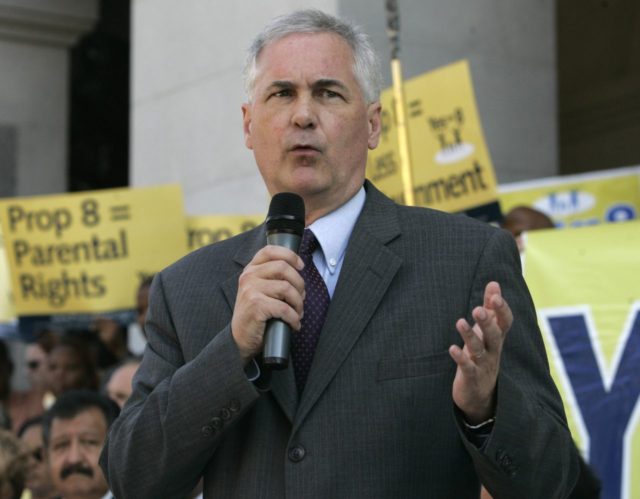Rep. Tom McClintock (R-CA) said President Donald Trump “is absolutely right” to link California’s wildfires to the Golden State’s poor management of water and forest resources. He spoke with Breitbart News Senior Editors-at-Large Rebecca Mansour and Joel Pollak during Monday’s edition of SiriusXM’s Breitbart News Tonight.
LISTEN:
“Our water policy is ludicrous,” said McClintock. “We have not built a major reservoir over a million-acre feed of storage since the New Melones was opened in 1979. Meanwhile, the state’s population has nearly doubled.”
McClintock added, “Droughts are nature’s fault. They happen, but water shortages are our fault. That’s a choice we made during the first Jerry Brown administration when we walked away from our reservoir projects, leaving some of them mid-construction, and we’re dealing now with chronic water shortages in one of the most water-rich regions in the country. That’s our fault.”
Last week, Trump linked “environmental laws” with California’s ongoing wildfires via Twitter:
McClintock concurred with Trump. “The president was right on both counts,” he remarked.
“The president is absolutely right,” said McClintock. “That policy is ridiculous. Now Jerry Brown has signed law that within two years … you’ll be getting a notice from your water district; if you’re an average residential water user, you use between 90 and 100 gallons a day … you’re going to get a notice from your water district telling you that you need to cut back your water usage to 55 gallons a day for no particular reason except it meets the leftist ideology. It’s decimated agriculture. It’s about to hit every Californian in the face. Donald Trump is absolutely right on the water side, and he’s right on the forest management side.”
McClintock explained what he described as California’s “benign neglect” of its forests.
“All of that excess timber in the forest is going to come out of it one way or another,” stated McClintock. “It’s either carried out or it will burn out. We used to carry it out. We used to actively manage our forests to match the density of the timber with the ability of the land and the groundwater to support it. We had healthy resilient forest. We also had thriving local economies, and we had a revenue stream coming from the auction of excess timber, 25 percent of which went to the local communities in the regions that were affected, and the other 75 percent went to the federal treasury where they actually made money for the forest service.”
McClintock continued, “The forest service didn’t used to cost us anything.It used to make us money which we could then put back into land management. About 45 years ago, during the environmental movement, we imposed laws that made active management of our forests all but impossible. It made them endlessly time consuming, ultimately cost-prohibitive, and the result is we’ve had an 80 percent decline in excess timber harvested off of the federal lands and a at the same time concomitant increase in acreage destroyed by forest fire.”
“These laws promised that they would improve our forest environment, and I think after 45 years of experience with these laws, we’re entitled to ask, ‘Okay, so how’s the forest environment doing?’ and the answer is absolutely damning,” assessed McClintock.
McClintock analyzed California’s negligent forest management as its resulting wildfires. “The fire is burning into dense wilderness area that hasn’t been logged in 50 years,” he said. “They’re dealing with tree densities of about 300 trees per acre. An acre in the Sierra can maintain between 80 and 100 trees per area depending on the topography. The wilderness is so overgrown that it’s got over 300 trees per acre. One pine tree with a five-inch diameter trunk requires 50 gallons of water a day to remain healthy. We’re carrying three and four times the fuel load — the timber density — that the land and the groundwater can support. You overlay a drought on top of that, you end up with a dead forest. That’s what’s happened to our wilderness. Wilderness is unmanaged forest, and the wilderness areas have been devastated by a policy of benign neglect that was started in the early 1970s.”
Privately owned forests fare better than their public counterparts, assessed McClintock. “When you look at the difference between privately managed lands that are not subject to these laws and the public lands that are, you see the stark difference in the health of the forests,” he said. “The privately managed lands are well-maintained. They’re healthy[and] resilient. The public lands are densely overgrown and dying. You can often tell the property line between a private and public forest simply by the condition of the forest.”
“If you don’t manage a forest and carry out the excess timber, it will become densely overgrown,” noted McClintock. “It will become susceptible to natural stresses like drought, disease, pestilence, and ultimately it will be consumed by catastrophic wildfire. … It often takes more than a century for a orest to reclaim a region that’s been devastated by fire.
McClintock concluded, “These beautiful gemstones of our public lands are now all threatened by policies that were supposed to improve the environment. Not only did they fail to improve it, they’ve done irreparable harm to it.”





No comments:
Post a Comment